Bookmarks in Power BI
In this exercise, we will learn how to create a bookmark in Power BI.
We can add a bookmark to capture a snapshot of the page in its current state.
Bookmarks are a powerful way to turn a Power BI report into a guided analytical experience. Bookmarks can also help maximize available page space and provide user-friendly interactions. The possibilities are nearly endless, spanning from simple outcomes, such as resetting filters, to more complex behaviors that swap visuals or navigate visual depth.
Commonly, we will add buttons to a report design and configure their actions to apply a bookmark. Shapes and images can also apply bookmarks.
Exercise: Creating a Bookmark in Power BI Desktop. In this exercise, we will learn how to create a bookmark.
Step 1: As we know bookmarks captures the current snapshot of the report page. Let’s go to the View tab in the ribbon and select Selection from the Show panes group. We can rename the object in the list by double-clicking them, so we can clearly identify them.
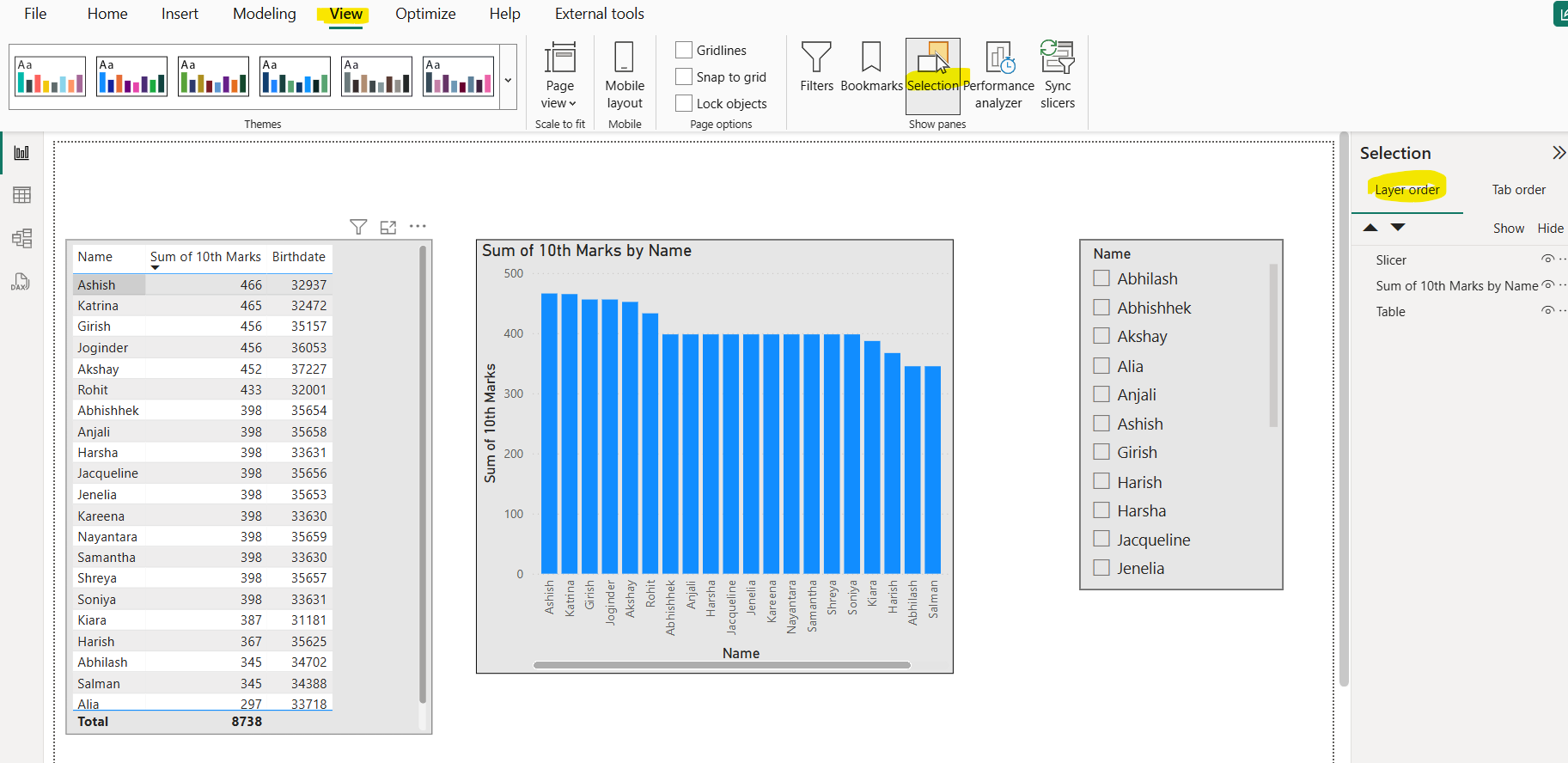
Step 2: In the Selection pane, the Sum of 10th Marks by Name chart displays, and the other visuals are hidden by clicking on the eye icon. Now we are ready to add the bookmark. On the View tab, select Bookmarks.
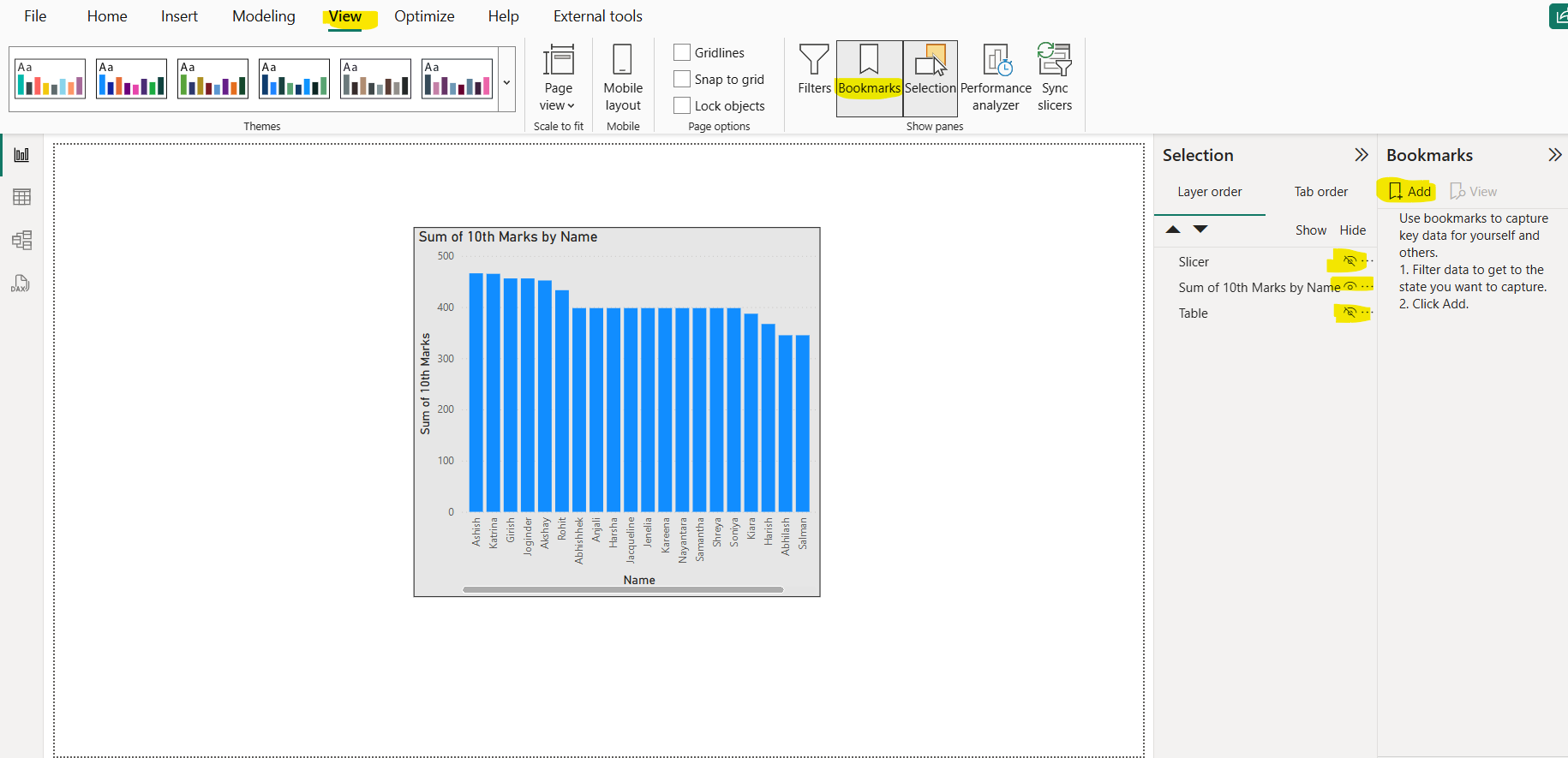
Step 3: On the Bookmarks panel that displays, select Add to add the bookmark. By default, the name of the bookmark is Bookmark 1.
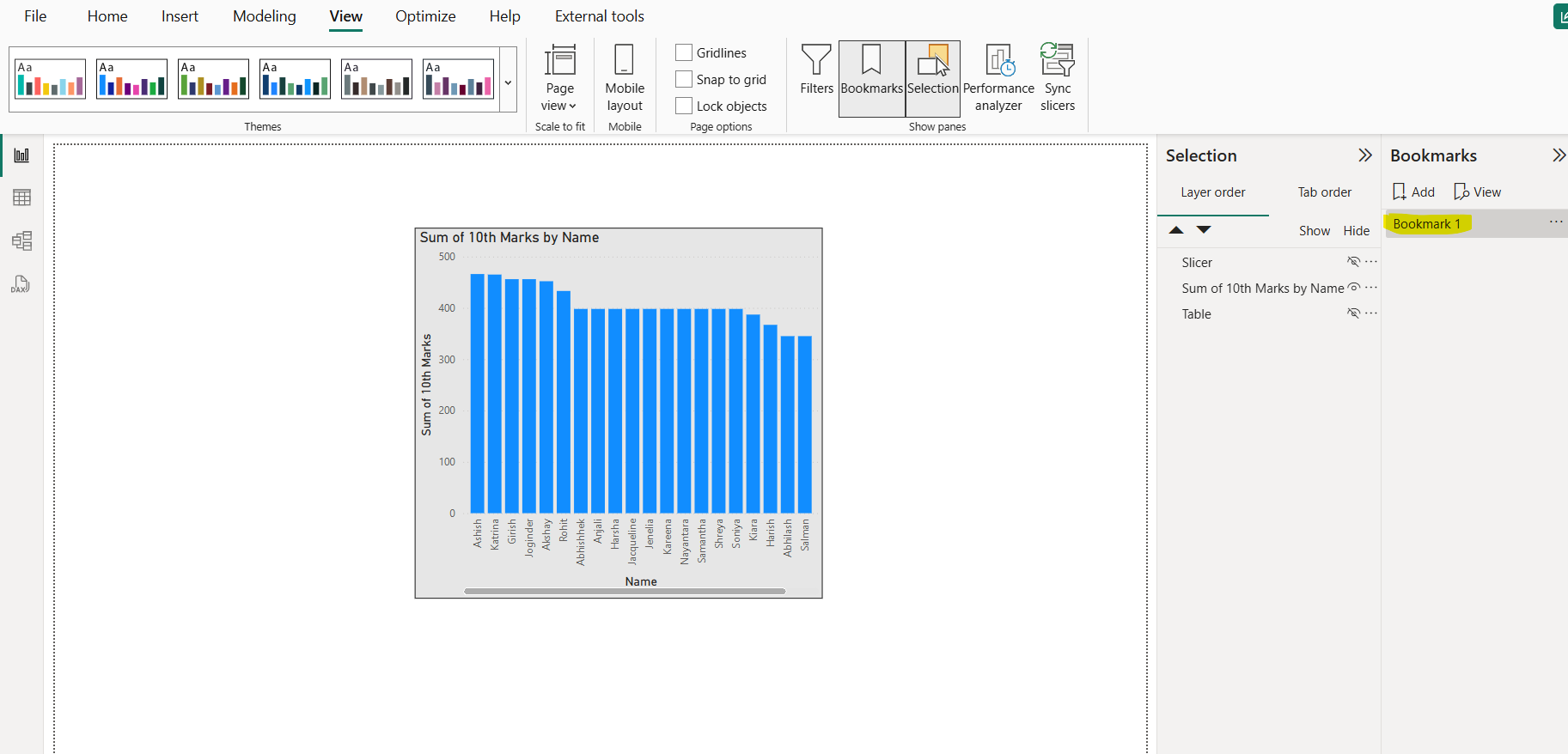
It's good practice to rename the new bookmark so its purpose is clear. To rename a bookmark, double-click the bookmark and enter the new name. Alternatively, by right-click on the bookmark, in the context menu choose the Rename option.
In this example, we want to change the bookmark name from Bookmark 1 to Ashish Column Chart because the Column chart is the focus of the page.
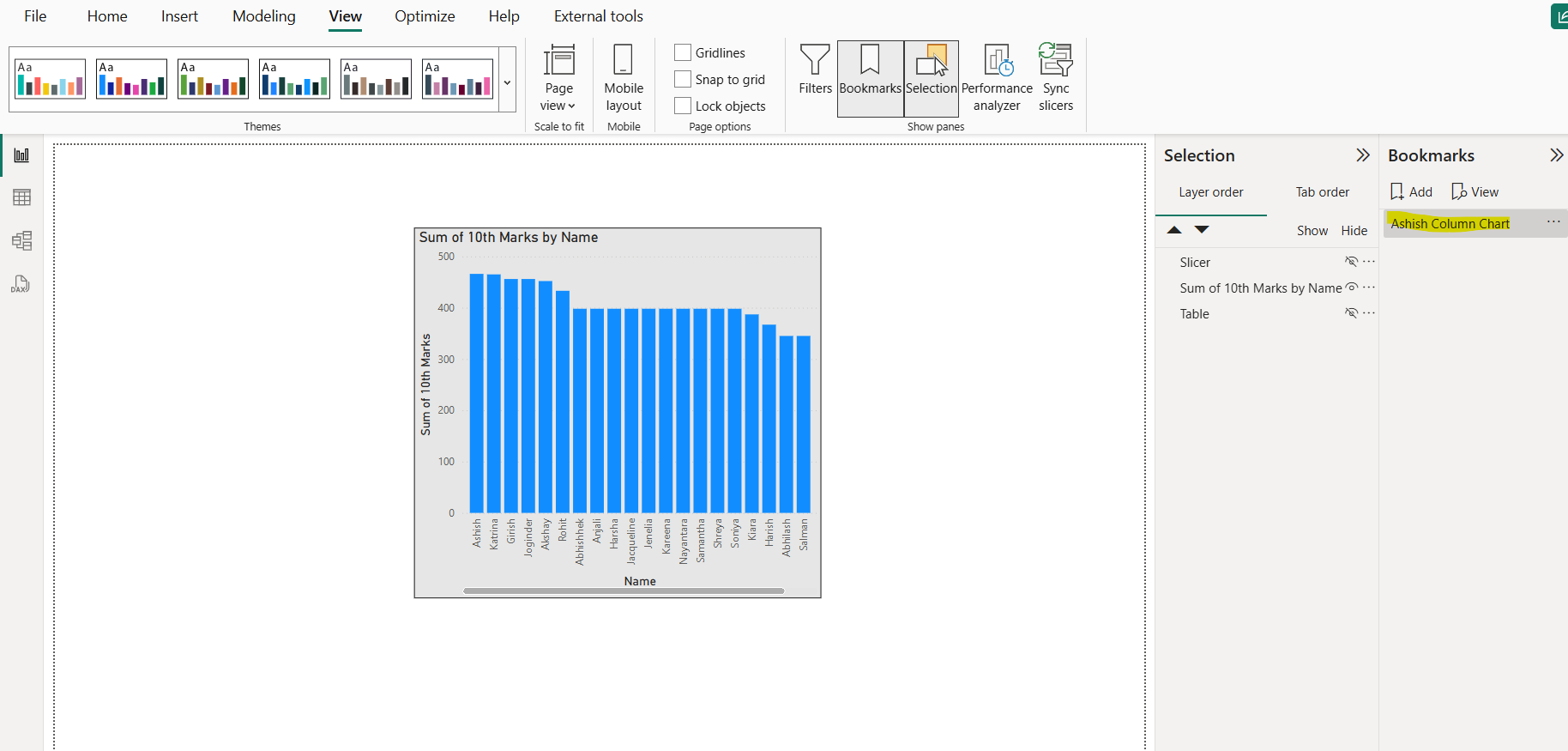
Step 4: We can add the second bookmark. Start by making changes to how the page currently appears by the help of the eye icon on the Selection pane. Then, click on Add. Then, add a bookmark for this new view of the page and rename it as Ashish Slicer Table.
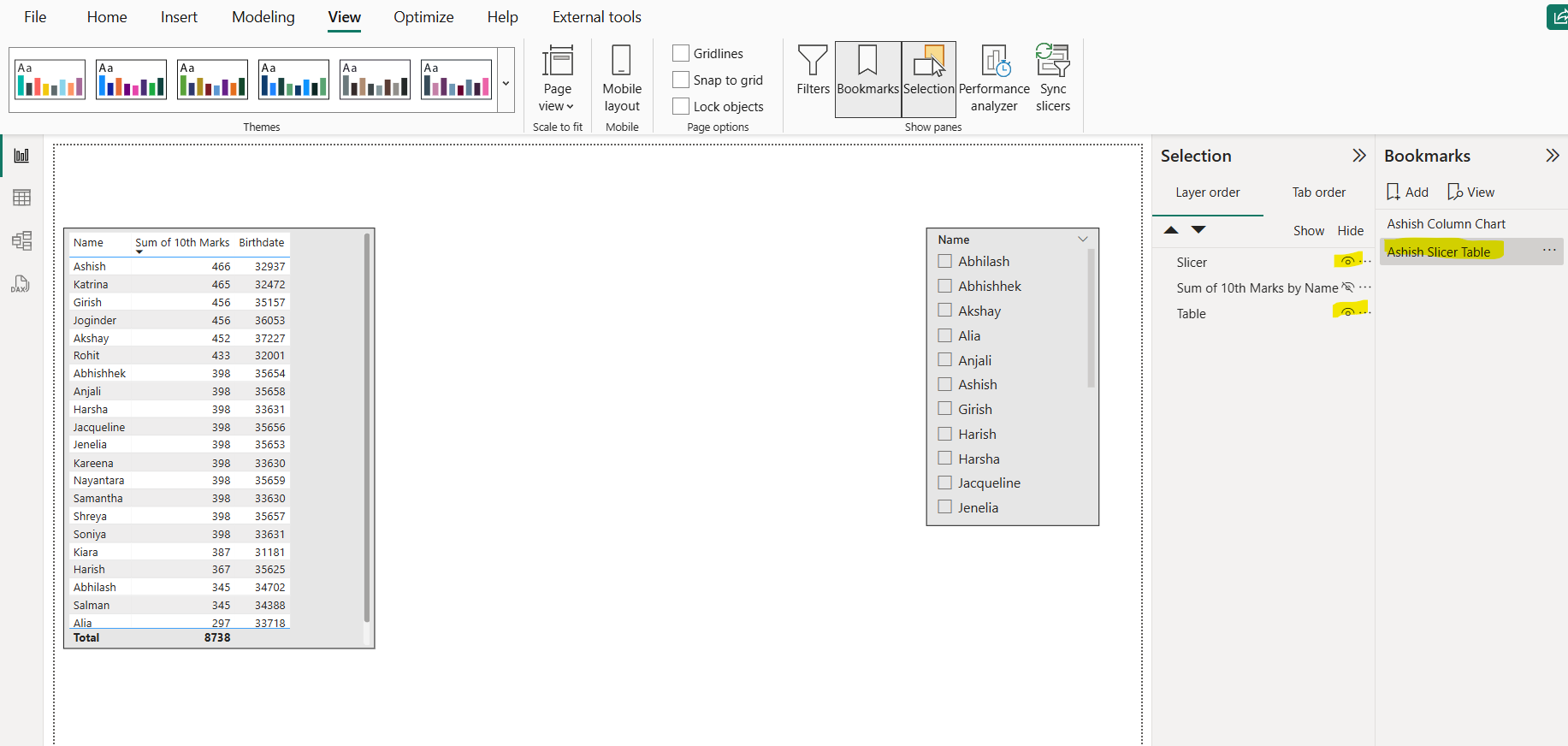
Step 5: Now, let’s switch between the two bookmarks to see the difference in the page.
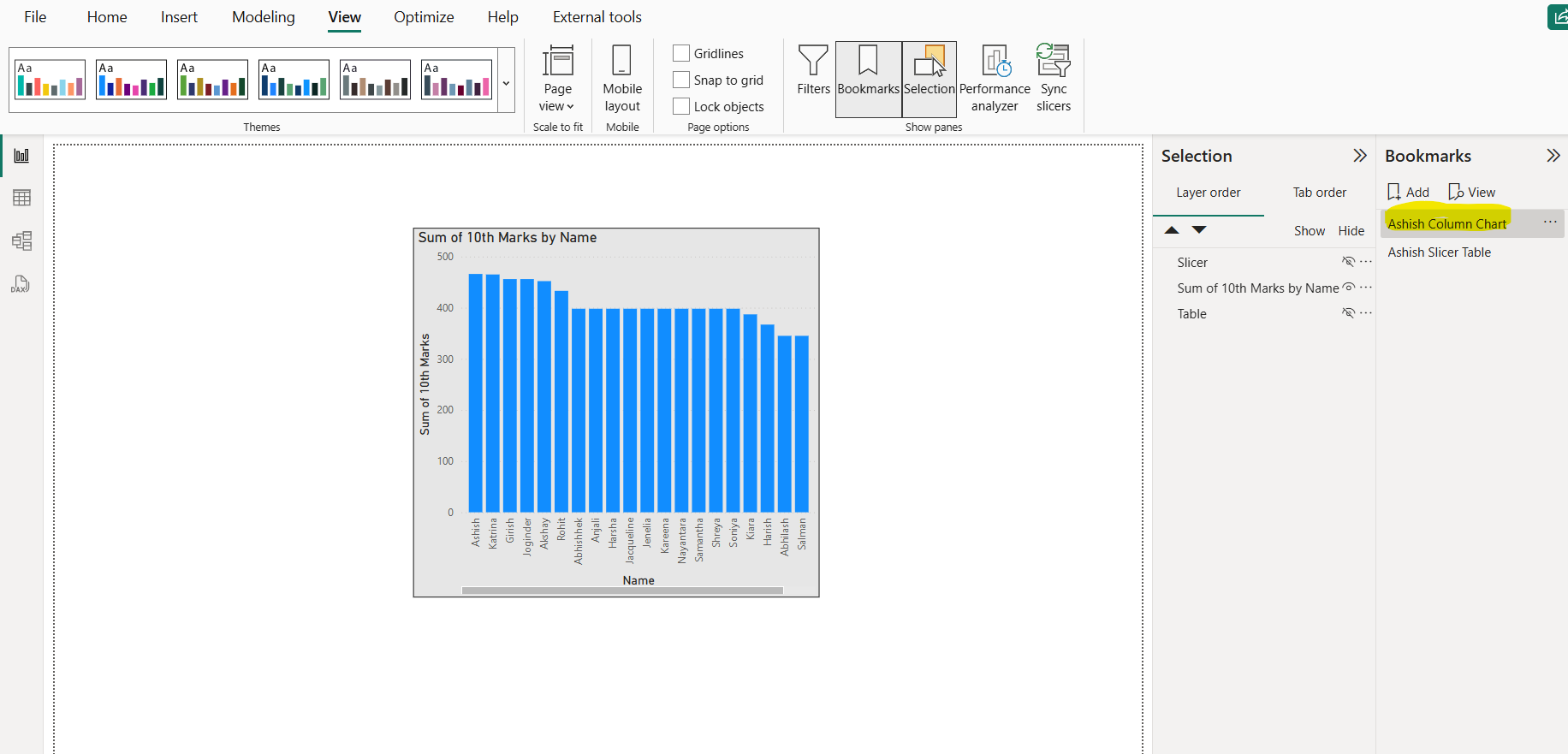
Bookmark state When we click on the three dots next to the bookmark name, then we can see the following options:
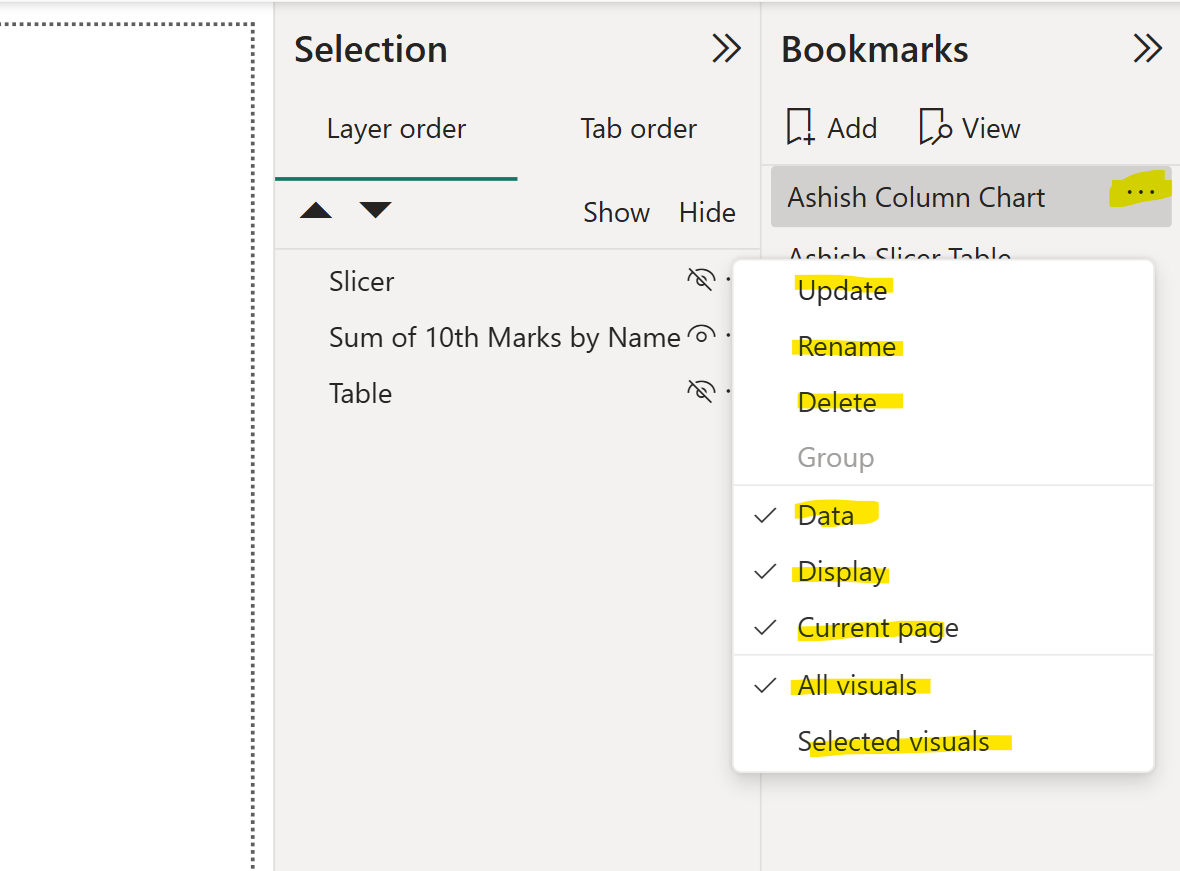
The bookmarks have different state relating to data, display, and the current page. By default, a new bookmark captures all state types, but we can decide to disable any of them.
Let’s understand the different states of bookmark:
• The Data state captures anything that impacts the queries that Power BI sends to the dataset. For example, if a slicer is included in the scope of the bookmark, the Data state retains the applied slicer items when the bookmark was created (or updated). It will also capture sort order and the drill depth of a visual because the query is impacted.
• The Display state is related to the visibility of a report object. Objects consist of visuals and also elements like text boxes, buttons, shapes, and images. It captures the hide or unhide state of the object. By using the Selection pane, we can hide or unhide objects and groups of objects. Additionally, we can swap visuals on a report page by creating bookmarks that capture hidden and unhidden objects.
• The Current Page option captures the current page of the report. It will switch to the bookmarked page view if we apply the bookmark from a different page. If unselected, it will still apply the bookmark (i.e. the display, data of the bookmark state will apply), but it will stay on the page we apply it from.
Note: Disabling the Current page state is rare, but we should consider some creative use cases. For example, on a page tooltip, a bookmark can change the visuals without navigating from the page that the report consumer has selected.
Bookmark scope Bookmarks can apply to all page visuals or specific visuals that we select.
There are the following bookmarks scope:
• The “All visuals” scope is turned on by default, meaning that the bookmark applies to all report objects, even if hidden.
• The “Selected visuals” scope will target only those visuals that are selected when the bookmark was updated.
Note: Performance is not impacted by having hidden visuals on a page. Hidden visuals don't run queries. Swapping visuals will provide flexible consumption options to the report consumer while retaining optimal performance and making the most out of the report page space.